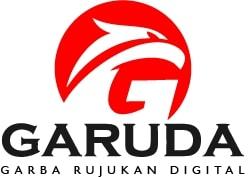EDUKASI KESEHATAN DAN DIVERSIFIKASI KANGKUNG “MIKASELA” (MIE KANGKUNG SEHAT, ENAK DAN HALAL) DI DESA MONCONGLOELAPPARA, MAROS
DOI:
https://doi.org/10.59060/s9affk94Keywords:
Moncongloe, Lappara village, Noodle, Kale, HealthAbstract
The synergism of life fostered together can increase metabolic products that can potentially be utilized for useful purposes for humans, especially in the field of health. Kale plant development is a very popular vegetable. This vegetable is usually made into stir-fry, chili, or fresh vegetables. Kale is also efficacious as an anti-toxin and can treat various health problems. In addition to its good taste, kale also has a high nutritional content. Kale contains vitamins A, B, C, protein, calcium, phosphorus, carotene and sitosterol and mineral ingredients, especially iron, which are useful for the growth and health of the body. The abundant availability of kale and the perishable nature of the product cause the selling price of kale to be low. This results in farmers often suffering losses. This activity was carried out with a direct training method to the target group. The training began with socialization of the benefits of kale, training on how to make healthy, halal and presentation kale noodles, then preparing a follow-up plan. The expected outputs in this activity are 1) The creation of products in the form of noodles made from kale that can be consumed daily; 2) The opening of business opportunities for partner communities; 3) The formation of a community that cares about health; 4) The formation of a frugal society. And to determine the level of understanding, counseling participants were conducted pretest and postest. The results achieved from this activity are the increased knowledge of partners in Moncongloe lappara Village, Maros about the utilization of kale as a healthy and halal noodle base.
References
Mayani, N., Kurniawan, T. and Marlina (2019) ‘Pertumbuhan Tanaman Kangkung Darat ( Ipomea reptans Poir ) Akibat Perbedaan Dosis Kompos Jerami Dekomposisi Mol Keong Mas’, Lentera, 15(13), pp. 201559–201563.
Permana, V.D., Koesriwulandari and Siswati, E. (2019) ‘ANALISIS FAKTOR-FAKTOR YANG MEMPENGARUHI PRODUKSI BENIH USAHATANI KANGKUNG (Ipomoae reptans L. Poir) DI DESA DAPET, KECAMATAN BALONGPANGGANG, KABUPATEN GRESIK’, Jurnal lmiah Sosio Agribisnis, 19(1), pp. 167–186. Available at: https://doi.org/10.30742/jisa1912019688.
Sabil, M.A., Azizah, R. and Ramadhan, S. (2024) ‘Scoping Review: Analisis Kontaminasi Residu Pestisida Tanaman Hortikultura Di Indonesia Dan Dampaknya Terhadap Kesehatan’, Visikes, 23(1), pp. 10–33. Available at: https://doi.org/10.60074/visikes.v23i1.9422.
Sari, Y.P., Sudrajat, A. and Sambodo, R. (2024) ‘Pemanfaatan Wortel dan Kangkung pada Pembuatan Mie sebagai Diversifikasi Olahan Pangan Rumah Tangga di Lingkungan Perkotaan Yogyakarta’, Farmers: Journal of Community Services, 05(1), pp. 68–72.
Sitinjak, A.A. and Simatupang, D.F. (2021) ‘Penyuluhan Inovasi Mie Sehat Tanpa Pengawet Bagi Ibu Rumah Tangga di Kelurahan Sidomulyo Kecamatan Medan Tuntungan’, PaKMas: Jurnal Pengabdian Kepada Masyarakat, 1(2), pp. 71–77. Available at: https://doi.org/10.54259/pakmas.v1i2.87.
Downloads
Published
Versions
- 2025-10-30 (2)
- 2025-10-30 (1)
Issue
Section
License
Copyright (c) 2025 Rahmat Kosman, Sukmawati, A. Hasrawati

This work is licensed under a Creative Commons Attribution 4.0 International License.












